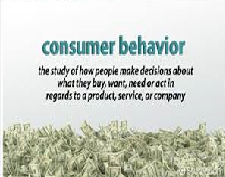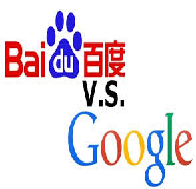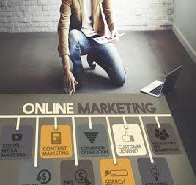Consumer Participation in Services Marketing Order Instructions: The essay topic is as follows: A brand must use consumer participation to shape the fundamentals of what it offers people, and constantly keep up with changing needs.

Brand and consumer must be on the same side and sometimes they are not. Services marketing is no longer about marketing to customers, it’s about engaging with and among customers. Discuss with reference to brand communities.
This is an essay based on scholarly journal article research, theory and critical evaluation/synthesis (not mere description). You must support your answer with a minimum of 6 journal articles (can be peer-reviewed or otherwise but must be from sources classified as Journals). The essays upper word limit is 2,500 words. There is no minimum word limit. The upper word limit is strict. NB. The word limit does not include; title page/cover page, sub-headings, reference list (it does include in-text citations), appendix.
Consumer Participation in Services Marketing Notes
A minimum of 6 journal articles. The penalty of 20/100 marks applied if this criterion is not met.
Full Harvard author-date referencing is required (in-text citations, and reference list).
Brand examples may be discussed, but only if they are cited within the content of the journal articles that have been selected for use. Personal and subjective examples may not be used.
Consumer Participation in Services Marketing Sample Answer
Introduction
Services are a unique form of product which a firm offers to its customers. It is unique in the sense that it cannot be seen, touched, or be separated from the person offering it. Companies must describe how they want to offer after- sales services (e.g. maintenance and repair as well as training). The unique characteristics of inseparability, intangibility, and perishability have led to services marketers to come up with the services expanded marketing mix which include people, physical evidence and processes in order to satisfy customers. Marketing researchers and practitioners also define a service as any act or performance that one party offers to another that is essentially intangible and does not result in the ownership of anything(WILLIAMS 2010). Production of services may or may not be tied to a physical product. The feature of inseparability refers to the fact that services cannot be touched, seen, felt or smelt before they are bought. To reduce uncertainty, the buyer will look for signs or evidence of the service quality by drawing inferences about service quality from the place, people, symbols and the price they sell it. The next defining characteristic of services is inseparability. This implies that services are normally produced and consumed simultaneously. The customer is present when the service is produced. The seller-client relationship is a special feature in the marketing of services. Services are also highly variable which implies that services depend on who provides them, when and where they are provided(WILLIAMS 2010). Firms should, therefore, have well-trained service providers to maintain a high quality of their services and to also standardize their service provision process. Services are lastly perishable in that they cannot be stored and if not utilized at the time they are available they simply disappear. Companies can prepare to take care of high demand periods by providing more personnel to provide services during peak hours(WILLIAMS 2010). A brand is defined as a name, design or symbol that identifies the product of a seller. Well-known brands enable companies to obtain acceptance, extensive distribution and higher prices. Branding is very important in marketing. Its benefits to a firm include enhancing product identification which implies that customers can be guaranteed of quality by reordering the same brand. Branding enables the firm responsible for the brand to be known, reduces price comparisons when customers’ perceive distinct brands and increases product prestige(WILLIAMS 2010).
The relationship between the marketing of services, customer engagement, and brand communities
Companies that provide services face three tasks, namely increasing their competitive differentiation, service quality, and productivity. In managing differentiation, service marketers often find it difficult to differentiate their services from those of competitors. Service marketers try to deal with price competitors by developing a differentiated offer, delivery and or image. It makes good business sense to listen to customers especially in service marketing. By actively seeking and encouraging customer participation, businesses get customers to provide constructive feedback and share ideas and on how they can improve in the manner they offer services in future to meet customer needs(WILLIAMS 2010). However, many modern companies pay lip service to the practice of listening to customers even though listening to customers can yield considerable benefits to a company. Companies spend millions of dollars in customer research yet fail to listen to what their customers tell them on a daily basis which is the biggest source of innovation that can be used to revolutionize the way they offer services to their customers. Many organizations are usually of customers input and therefore do not give them an opportunity to give feedback. Customers who are given an opportunity to give feedback on service quality, offering or any other aspect of a service that a company sells, feels that the business values them and are thus tied to the business and eventually become loyal customers (ZHANG, SHABBIR, PITSAPHOL and HASSAN 2015). Once customers feel that their input is important they end up becoming repeat customers. Customers who provide feedback are likely to make repeat purchases than customers are contacted through word of mouth(WILLIAMS 2010). Customer feedbacks are also used to determine the amount of research and development that a company should engage in. Marketers in many leading multinational corporations such as Microsoft Inc, Harley Davidson, and General Motors hold that one of the most cost efficient and effective ways to recruit new customers is through the formation of brand communities. There are many benefits that companies can reap from brand communities which include new products evolve from these communities as they interact. Members are able to collaborate and develop new products that are innovative that the related company can implement. Brand communities increase the likelihood of customers adopting new products that companies introduce into the market. Brand communities also build a strong wall that keeps out competitor’s products (RAÏES and GAVARD-PERRET 2011). A brand community can be defined as a group of loyal consumers of a company’s brand. Members of the community are not necessarily based in one geographical location but are structurally constructed. The brand community can also be a virtual group on the internet. According to social identity theory, the foundation of a brand community is based on the motives of each member and feeling of a sense of identification with the group. Consumer behavior is motivated by social motives and joint decision making processes that are shaped by shared information that is socially constructed. The shared and socially constructed information is guided by social norms, taboos, traditions, rituals, and other influences. Community influences, therefore, affects choices, attitudes, and behavior. A brand community is a new social concept and marketers use it to explain and understand consumer behavior. The fact that the brand community reflects the cultural meaning and social process makes it a social concept that is powerful indeed. A brand community is a concept that has evolved due to converging environmental trends such as a decline in traditional families and community, the growing power of individual consumers and the rise in internet penetration and usage(WILLIAMS 2010).
In addition to the various benefits identified in the foregoing, brand communities have many uses in modern organizations. Brand communities assist organizations to solve service related problems and help members to learn how to use services correctly. Marketers of services use brand communities to pass important marketing messages to customers in these communities and therefore act as conduits for information. Customers use brand communities that they are part of to meet new friends, to meet existing friends and as a means of self-expression through the sharing of various content and creative ideas(WILLIAMS 2010). Companies use brand communities to market their various services since these communities offer low –cost, high-efficiency marketing programs which enable the companies to achieve their marketing objectives. Service marketers use the brand communities to carry out low-cost research on various aspects of marketing, deliver prompt customer service at low cost, socialize new customers and educate both new and old customers. Brand communities help new customers’ to develop a strong bond with the firm’s brand leading to brand loyalty. Loyal customers in these communities increase the number of times they make new purchase decisions which in effect increases a firm’s turnover (WILLIAMS 2010).
Brand communities represent a group of consumers organized around a particular brand. These communities are strengthened by offline and online social interactions which are aimed at enhancing communication among members of the brand about the brand features, benefits and new developments among other issues. Some groups develop certain rituals and traditions that pervade the entire group making member possess a consciousness of a kind and feel more responsibility towards each other to propagate the ideals, traditions, and norms of the group(WILLIAMS 2010). In these communities ordinarily made up of consumers of a certain brand, members have an interest in the brand which is enduring. This enduring interest in the brand could stem from the service offered or the category of service that is offered by the company that owns the brand. An example of a brand community is Harley Owners Group (HOG) which is a community involving Harley Davidson Motorcycle owners. Members of the group have a fanatical devotion to the Harley Davidson brand. Members of the group share experiences about the brand, features, problems and make suggestions to the management on how the brand can be improved on to enhance their experience and attract more motorbike enthusiasts. Different product categories have brand enthusiasts that form a brand community which at times could be a group of people or an internet-based virtual community. Most car brands have brand communities made of enthusiasts of the various brands (WANG, CHAN and YANG 2013).
The art of engaging with customers in service marketing
Services can be marketed effectively through brand communities due to their very nature. Since services are intangible, the involvement of marketers in service delivery is critical. By focusing on brand communities, a marketer of services can easily determine the specific features of a particular community and design marketing messages that effectively meet the needs of the community members. The marketer can communicate to members online through email lists, established chat-rooms, bulletin boards that are used by the group and also by attending offline events and face-to-face meetings organized by the community members from time to time. The marketer can join several brand communities to provide technical advice on the company’s services. Brand communities are essentially social groups that create a sense of belonging (SAXENA 2011). By joining such groups or marketing to such groups a marketer is able to connect with members at a more personal level and build a long-lasting relationship with group members which would not have otherwise been possible. The marketer could empathize with members who are going through challenging situations unrelated to the brand. By doing this he would build a strong bond with the members of the community which would translate to brand loyalty and higher sales. By interacting with the community members on a personal level the marketer would be able to get new ideas to develop new innovative service offerings, deepen members’ knowledge on available service features and benefits, deliver technical advice and gather customer feedback information. Members of a brand community are able to form one voice to communicate their concerns to management on various issues that need to be addressed to deepen service experience. Service quality is very important in generating repeat sales. By engaging directly with a brand community a service provider can standardize service delivery across various customers which would enhance service experience and increase customer satisfaction (MITU and VEGA 2014).
The essential markers of a brand community make engaging with customers the most effective way of selling services. One of the essential markers of a brand community is a consciousness of kind which refers to the intrinsic connection that community members feel towards one another through a sense of being an accepted member of the community. This creates a sense of being separated and different from those who are not members of the group. This is an essential feature of a group that would enable a service marketer to build a strong relationship with customers who are in the brand community (LIAW 2011). Members of the group would endeavor to make frequent purchases to have something to share about the brand and to enhance the feeling of being part of the group. Services by nature are intangible and perishable and as such provider-client interaction is a special feature of services marketing. The marketer will be able to provide services to clients in a group collectively which will enhance quality as the services offered will be standardized and uniform. Any questions that any member will raise will be answered in the full hearing of all group members. Members will have a uniform understanding of the services that the company provides, the benefits that members get and the charges will be explained to all members including information on how they are computed (JAHN and KUNZ 2012). The other marker that would make selling services in brand community worthwhile as it will create a long-lasting relationship is a sense of moral responsibility among group members. Brand community groups have similar views of life, similar attributes, and values and as such, they have a unified group that could easily be reached and convinced to make purchase decisions. This is because any issues that they may raise on service issues are uniformly understood by all members since they have the same orientation in life. Community members have a linking value even if they meet online. When they meet face to face they normally have an innate connection since in most cases they had been communicating online and sharing their experiences (DHOLAKIA and ALGESHEIMER 2012). The sense of moral responsibility among community members is a marker of a brand community that marketers can use to sell their services and build long-lasting relationships. Brand community members have a sense of obligation towards other community members. Members provide social support to each other and help each other to go through challenging situations. If the marketer sells to one member effectively he had in effect sold to all the other members of the community. Members recruit new members into the community and have a code of rules and regulations that guide such recruitment. New member joining the community will be expected to abide by the prevailing community rules and will purchase the same services as the old members (ALAGÖZ, EKICI and ISLEK 2011).
Consumer Participation in Services Marketing References
ALAGÖZ, S.B., EKICI, N. and ISLEK, M.S., (2011). Brand Communities in the Axis of
Socializing Customers: Sample of Volkswagen Beetle Owners, Turkey/Sosyallesen Müsteriler Ekseninde Marka Topluluklari: Volkswagen Beetle Sahipleri Türkiye Örnegi. Ege Akademik Bakis, 11(3), pp. 465-477.
DHOLAKIA, U.M., and ALGESHEIMER, R., (2012). Brand Community. Rochester: Social
Science Research Network.
JAHN, B. and KUNZ, W., (2012). How to transform consumers into fans of your
brand. Journal of Service Management, 23(3), pp. 344-361.
LIAW, G., (2011). A Study on the Influence of Consumers’ Participation in a Brand
Community on Purchase Intention. Journal of International Management Studies, 6(1), pp. 1-8.
MITU, B. and VEGA, D.O.C., (2014). Consumer’s Participation on Brand Pages on
Facebook. Management Dynamics in the Knowledge Economy, 2(1), pp. 87-105.
RAÏES, K. and GAVARD-PERRET, M., (2011). Brand Loyalty Intention Among Members
of a Virtual Brand Community: the Dual Role of Commitment. Recherche et Applications en Marketing, 26(3), pp. 23-41.
SAXENA, S., (2011). Consumer Participation and Perceived Service Quality in Extended
Service Delivery and Consumption, Arizona State University.
WANG, Y., CHAN, S.F. and YANG, Z., (2013). CUSTOMERS’ PERCEIVED BENEFITS
OF INTERACTING IN A VIRTUAL BRAND COMMUNITY IN CHINA. Journal of Electronic Commerce Research, 14(1), pp. 49-66.
WILLIAMS, A.S., (2010). Examining the role of brand associations in multipurpose fitness
facilities: The relationship between service quality, exercise commitment, brand associations, and brand loyalty, Indiana University.
ZHANG, J., SHABBIR, R., PITSAPHOL, C. and HASSAN, W., (2015). Creating Brand
Equity by Leveraging Value Creation and Consumer Commitment in Online Brand Communities: A Conceptual Framework. International Journal of Business and Management, 10(1), pp. 80-91.












